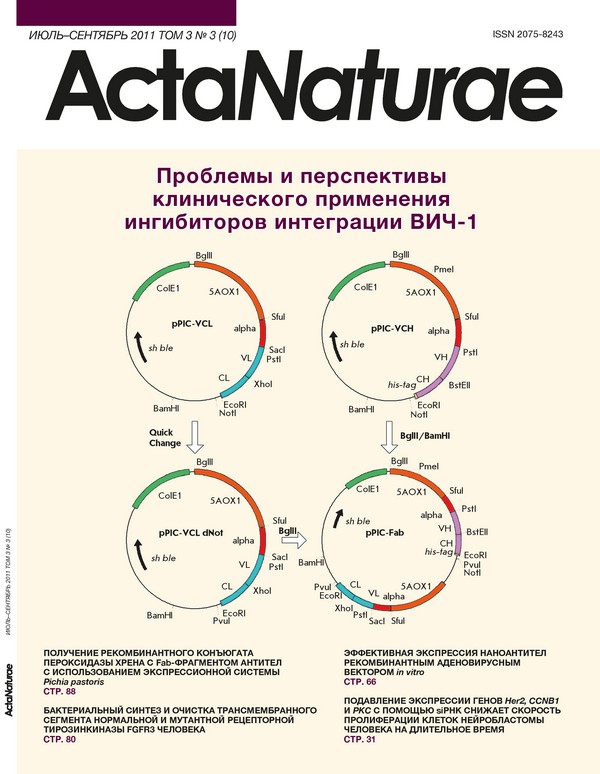Аннотация
The fibroblast growth factor receptor 3 (FGFR3) is a protein belonging to the family of receptor tyrosine kinases. FGFR3 plays an important role in human skeletal development. Mutations in this protein, including Gly380Arg or Ala391Glu substitutions in the transmembrane (TM) region, can cause different disorders in bone development. The determination of the spatial structure of the FGFR3 TM domain in a normal protein and in a protein with single Gly380Arg and Ala391Glu mutations is essential in order to understand the mechanisms that control dimerization and signal transduction by receptor tyrosine kinases. The effective system of expression of eukaryotic genes in bacteria and the purification protocol for the production of milligram amounts of both normal TM fragments of FGFR3 and those with single pathogenic mutations Gly380Arg and Ala391Glu, as well as their 15N- and [ 15N, 13C]-isotope-labelled derivatives, were described. Each peptide was produced in Escherichia coli BL21(DE3)pLysS cells as a C-terminal extension of thioredoxin A. The purification protocol involved immobilized metal affinity chromatography and cation- and anion-exchange chromatography, as well as the fusion protein cleavage with the light subunit of human enterokinase. The efficiency of the incorporation of target peptides into DPC/SDS and DPC/DPG micelles was confirmed using NMR spectroscopy. The described methodology of production of the native FGFR3 TM domain in norma and with single Gly380Arg and Ala391Glu mutations enables one to study their spatial structure using high-resolution heteronuclear NMR spectroscopy.







